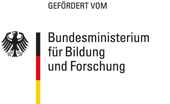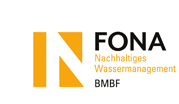Sensitivity Towards Copper: Comparison of Stygal and Surface Water Species‘ Biomonitoring Performance in Water Quality Surveillance GroundCare | Publikation | Grundwasser
Vorschau
In a rapidly urbanizing global environment, anthropogenic sources of pollution [e.g., heavy metals, pharmaceuticals] have increasingly contaminated drinking water sources like surface-or groundwater, jeopardizing the safe provision of potable water. Due to the lack of appropriate technology, continuous water surveillance is yet not feasible and while biological early warning systems have shown promising application possibilities, their associated drawbacks limit their practical utility. In this study, two stygal species, Niphargopsis casparyi [Pratz, 1866] and Proasellus slavus [Remy, 1948], were introduced as novel biomonitoring candidates that may reduce maintenance time and cost. Firstly, copper sensitivity of the stygal and two surface species, Gammarus fossarum and Daphnia magna, were defined in acute and chronic toxicity tests. Secondly, using the Multispecies Freshwater Biomonitor [MFB], behavioural responses of all species were examined and compared in multiple copper pulse experiments. Lastly, in a 2-month long field experiment, the applicability of N. casparyi in water quality survey was tested in a local waterworks. Its performance was then compared to G. fossarum and an implemented biomonitor using daphnids. Regarding mortality, copper toxicity tests showed low impact of acute copper pulses onto the two stygal species N. casparyi and P. slavus, but high impact on the surface water species. Chronic exposure led to increased mortality in G. fossarum and P. slavus, but not on N. casparyi. Overall, the pulse and field experiments revealed pronounced, useful, and reproducible behavioural responses towards copper for G. fossarum, N. casparyi, D. magna, but not for P. slavus, making them promising candidates for online biomonitoring.
Zum Produkt
Ansprechperson
Dr. Almut Gerhardt
T. +49 7531 9765096
M. info@limco-int.com


 English
English



